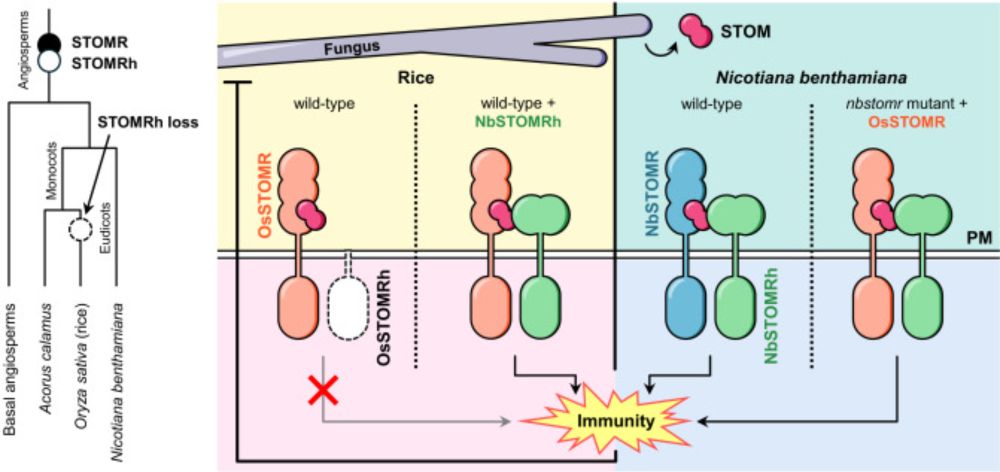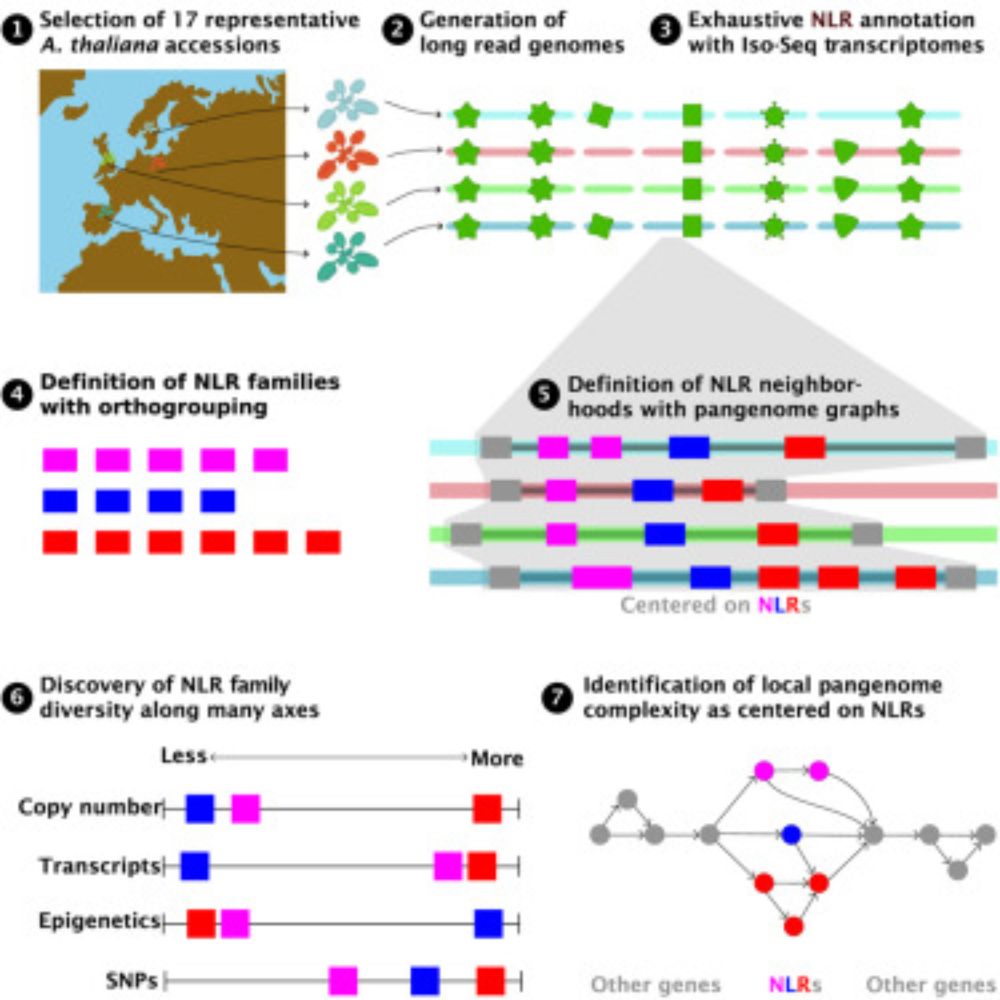
It was a pleasure to finally meet, learn about his #PlantImmunity & #ImmunoGenomics work to uncover evolutionary conserved defense mechanisms, & talk plant science. 👍🤓

It was a pleasure to finally meet, learn about his #PlantImmunity & #ImmunoGenomics work to uncover evolutionary conserved defense mechanisms, & talk plant science. 👍🤓
Thanks to wonderful coauthors/collaborators/friends, the whole @doudna-lab.bsky.social and everyone at @innovativegenomics.bsky.social

Thanks to wonderful coauthors/collaborators/friends, the whole @doudna-lab.bsky.social and everyone at @innovativegenomics.bsky.social
academic.oup.com/plcell/artic...


‼️ not only in genomes, but also in metagenome datasets similar trend observed
See their Genome Biology paper
genomebiology.biomedcentral.com/articles/10....
#PMS2025

‼️ not only in genomes, but also in metagenome datasets similar trend observed
See their Genome Biology paper
genomebiology.biomedcentral.com/articles/10....
#PMS2025
Creative pumpkins from labs across @mpi-bio-fml.bsky.social
Our lab's @plantevolution.bsky.social "Carveolution" evolved it's way to 1st place 🏆




Creative pumpkins from labs across @mpi-bio-fml.bsky.social
Our lab's @plantevolution.bsky.social "Carveolution" evolved it's way to 1st place 🏆

Today, we report the discovery of telomerase homologs in a family of antiviral RTs, revealing an unexpected evolutionary origin in bacteria.
www.biorxiv.org/content/10.1...

Today, we report the discovery of telomerase homologs in a family of antiviral RTs, revealing an unexpected evolutionary origin in bacteria.
www.biorxiv.org/content/10.1...

@isabelmonte.bsky.social highlights work revealing cross-species co-receptor transfer can overcome restricted taxonomic functionality in rice, pointing to strategies for crop protection
www.cell.com/cell-host-mi...

@isabelmonte.bsky.social highlights work revealing cross-species co-receptor transfer can overcome restricted taxonomic functionality in rice, pointing to strategies for crop protection
www.cell.com/cell-host-mi...
Also I just learned that the dye is from Höchst outside Frankfurt, not in fact Austria where this is. But the sign is blue!

Also I just learned that the dye is from Höchst outside Frankfurt, not in fact Austria where this is. But the sign is blue!

showing that challenging old assumptions with new technologies can broad our understanding of viral infection strategies. Pervasive splicing increases the protein repertoire of a plant DNA virus
www.biorxiv.org/content/10.1...

showing that challenging old assumptions with new technologies can broad our understanding of viral infection strategies. Pervasive splicing increases the protein repertoire of a plant DNA virus
www.biorxiv.org/content/10.1...
Enjoy reading it!!
www.sciencedirect.com/science/arti...

Enjoy reading it!!
www.sciencedirect.com/science/arti...
Apparently, bryophytes time and again include microbial genes in their genomic repertoire, and occupy a langer gene space than vascular plants.
www.nature.com/articles/s41...

Apparently, bryophytes time and again include microbial genes in their genomic repertoire, and occupy a langer gene space than vascular plants.
www.nature.com/articles/s41...
Older flowers (bottom) show dark red/ orange tints whereas young buds (top) display strong fuchsia color. Getting closer..
Older flowers (bottom) show dark red/ orange tints whereas young buds (top) display strong fuchsia color. Getting closer..




www.nature.com/articles/s41...

www.nature.com/articles/s41...
@natanellae.bsky.social @tatsuyanobori.bsky.social @joeecker.bsky.social
www.nature.com/articles/s41...
@natanellae.bsky.social @tatsuyanobori.bsky.social @joeecker.bsky.social
www.nature.com/articles/s41...
"Pangenomic context reveals the extent of intraspecific plant NLR evolution"
www.cell.com/cell-host-mi...
#plantscience #plantimmunity #pangenomes #science #nlr

"Pangenomic context reveals the extent of intraspecific plant NLR evolution"
www.cell.com/cell-host-mi...
#plantscience #plantimmunity #pangenomes #science #nlr
You might enjoy my recent Science piece on AI "gaslighting":
www.science.org/doi/10.1126/...

You might enjoy my recent Science piece on AI "gaslighting":
www.science.org/doi/10.1126/...


